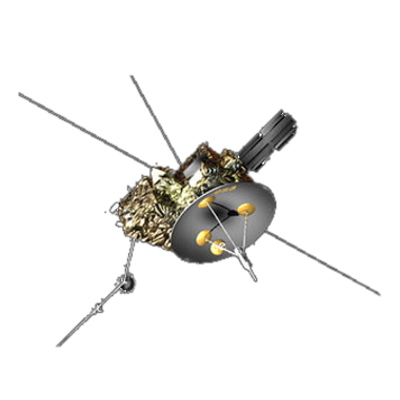Ulysses HISCALE Data Analysis Handbook
Appendix 4. SIS Common Data File
Document Reference: Ulysses Software Interface Specification Common Data File SIS 2sd, Sept. 22, 1994
Abstract. This SIS describes the detailed format, contents, and transmission medium of the Ulysses Common Data File. The CDF tape is produced by the Data Records Subsystem program CDFGEN under the auspices of the Data Management Team and contains science experiment data that have been reduced through algorithms developed by the Ulysses Principal Investigators. This version is a revision of the original document.
A4.1 General Description
This Software Interface Specification (SIS) provides the contents and format of each individual instrument Common Data Record in the Common Data File (CDF) required by the Ulysses Principal Investigators.
This specification covers the detailed format of the Ulysses CDF for all phases of the mission from ground data system testing through the end of mission.
| (1) | (ISPM-MOS-3-700) | Data Records System Functional Requirements |
| (2) | (ISPM-MOS-4-300) | Data Management Team Plan |
| (3) | (ISPM-MOS-3-800) | Telemetry System Functional Requirements |
| (4) | (ISPM-SRD-DRS-4) | Common Data File Software Requirements Document |
| (5) | (JPL 628-55(B)) | Ulysses Science Data Management Plan |
| (6) | (JPL Document) | Software Interface Specification - Compact Disk Read Only Memory |
Interface Location and Medium. Common Data File (CDF) tapes are generated on computers located at the JPL Information Processing Center (IPC). The Hedgecock file is prepared on a VAX computer and provided to the Ulysses DMT for inclusion on the tape or CD-ROM.
Data Sources, Destinations, and Transfer Methods. CDF tapes are created from spacecraft telemetry data using Experiment Data Records (EDR) as the source. The CDF is written to magnetic tape or CD-ROM and shipped to each Principal Investigator or Interdisciplinary Scientist as designated by the Project.
Generation Method and Frequency. The Ulysses Data Management Team (DMT) shall operate the Data Records System CDF generation software on a routine basis to generate CDFs covering a one calendar month period.
Pertinent Relationships with Other Interfaces. None identified.
Labeling and Identification (Internal/External). All CDF tapes shall have IBM magnetic tape labels; CD-ROM shall conform to ISO Standard 9660. All media shall be labeled with an external label describing its contents. In addition, each record within the CDF shall contain Standard Formatted Data Unit (SFDU) headers which contain such information as project identifier, file identifier, data type indicators, earth received time, etc.
A4.1.5 Assumptions and Constraints
Usage Constraints. Only Ulysses designated Principal Investigators, Radio Scientists, Interdisciplinary Scientists, and Project Scientists shall receive CDFs. The CDF distribution is defined in Appendix 3 of this document.
Priority Phasing Constraints. None identified.
Explicit and Derived Constraints. None identified.
A4.2 Interface Characteristics
A4.2.1 Hardware Characteristics and Limitations
Special Equipment and Device Interfaces. None identified.
Special Setup Requirements. None identified.
Volume and Size. Each CDF consists of two tape files consisting of records containing processed experiment data. Each file consists of n fixed length records. The maximum size of any file is 10000 bytes. The first file contains CDF data from the BAM, GLG, KEP, LAN, SIM, and STO experiments. The record size varies from 48 bytes to 100 bytes depending upon the experiment algorithm. One experiment may have more than one algorithm and hence more than one type of output record. The frequency of output records is dependent upon instrument cycle times as described individually in Section A4.5.
The second file contains data from the HED experiment. The record size is 47 bytes blocked to 9964 bytes.
A4.2.2 Failure Protection, Detection, and Recovery Procedures
File Backup Requirements. None identified.
Security/Integrity Measures. Common Data File data are provided to all experimenters and their staffs for the purposes of correlating measurements between different experiments at an early stage in the analysis process. This is intended to aid in the interpretation of scientific results. The uses of these correlative data, including publication, are subject to constraints imposed by the Science Working Team (SWT). The intent of these constraints is to protect the proprietary right of the experimenter while promoting timely inter-experiment correlation.
End-of-File Conventions. The Common Data Record file on the tape shall be terminated by the standard IBM end-of-file and end-of-volume labels. End file conditions on CD-ROM shall conform to ISO Standard 9660.
A4.3 Access
Programs using the Interface Data Principal Investigator software are not defined here.
Timing and Sequencing Considerations. The records in the CDF files are in Spacecraft Event Time (SCET) order. If no SCET is available, then data shall be placed in Earth Received Time (ERT) as deemed appropriate by the Data Management Team.
Effective Duration. CDF files will be generated on a monthly basis. Each file will contain the data for the previous calendar month. The input source to the CDF processor, the Master Data Record (the complete set of all EDR and Monitor data from the mission), is archived until the end of the mission.
Priority Interrupts. None identified.
Input/Output Protocols, Calling Sequences. None identified.
Continued:
- A4.4 Detailed Interface Specifications
- A4.5 CDF Data Record Format Specifications
- A4.6 List of Acronyms and Abbreviations
Return to HISCALE List of Appendices
Return to Ulysses HISCALE Data Analysis Handbook Table of Contents
Updated 8/8/19, Cameron Crane
QUICK FACTS
Mission End Date: June 30, 2009
Destination: The inner heliosphere of the sun away from the ecliptic plane
Orbit: Elliptical orbit transversing the polar regions of the sun outside of the ecliptic plane



